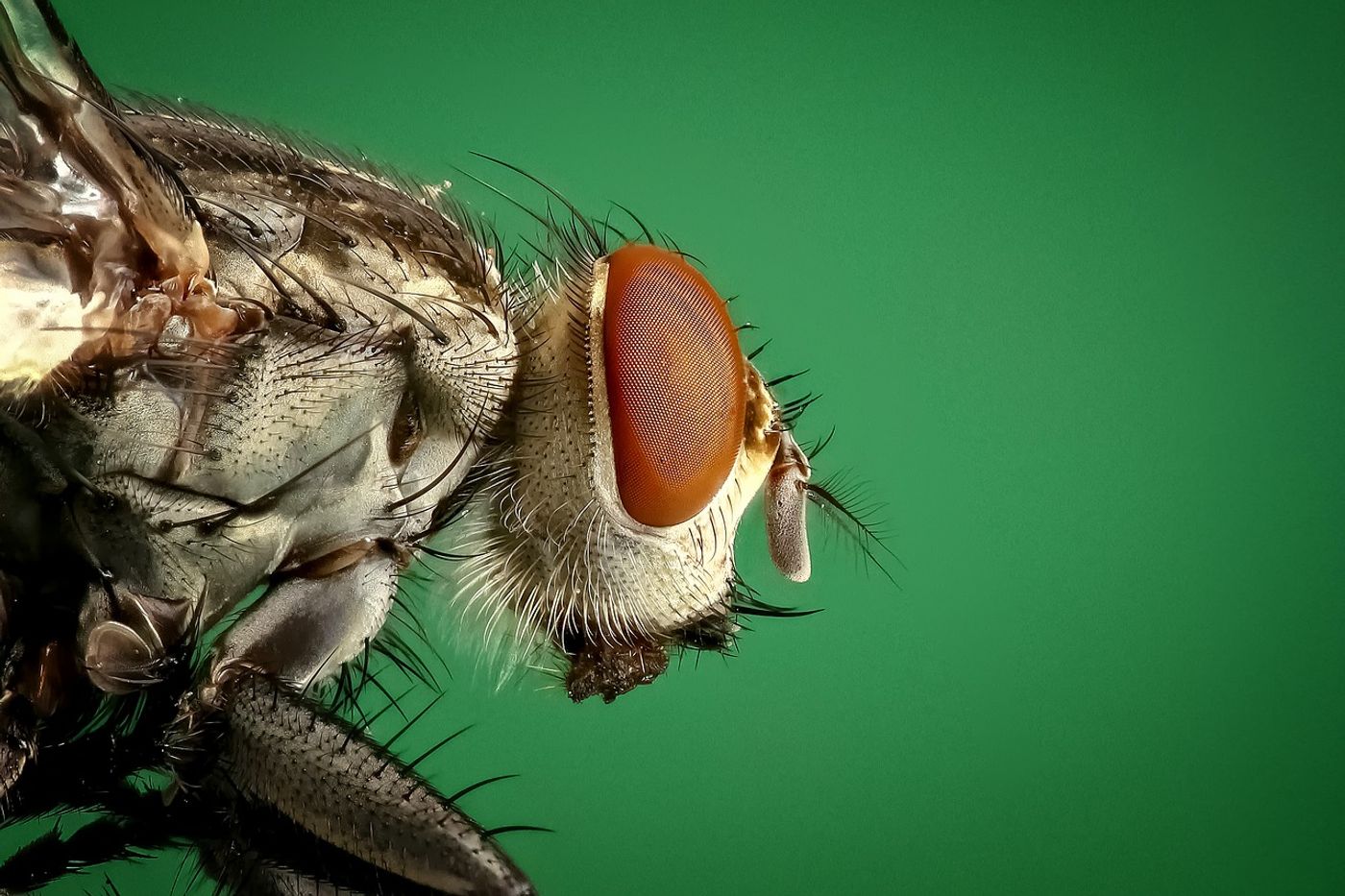Killer Flies Push the Boundaries of Fast Vision
Have you ever noticed that it’s difficult to swat a fly? Although some attribute their deftness to simple feats of agility, new research suggests that there could be a more technical explanation.
Image Credit: Pixabay
Researchers from the University of Cambridge have extensively studied various kinds of flies, and they’ve found that a fly’s vision might be the main suspect behind their innate ability to dodge fast-moving objects.
According to Professor Roger Hardie at the University of Cambridge, flies have a different type of optical system than humans do that could enable them to see several times faster than we do.
“It seems that there were probably two different sorts of light-sensitive cells; one that’s found in the eyes of flies that we call microvillar photoreceptors, and one that we find in our own eyes and these are what we call rods and cones,” Hardie explained.
“It seems rather clear that this microvillar structure of the fly, it’s more sensitive and it can also respond faster.”
Related: Here's why fruit flies have been to space
Almost like seeing everything in slow motion, flies may be able to see things nearly four times faster than we do, giving them more time to react at the moment.
The rate of speed at which information moves from the eyes to the brain is known as the flicker fusion rate. Flies eyes transmit information to their brains more quickly in terms of hertz (cycles per second) than ours do, and this is the key to their ability.
For more clarity on what's going on here, imagine picking up your smartphone and recording video in slow-motion at 240 frames per second. You've just recorded something in real-time at the same speed that it occurred in real life, but the playback is much slower than you recall it because the camera transmitted several more frames per second of footage than your eyes did; this is precisely how experts think a fly's eyes work.
Because of their innate ability, something acquired through the gift of natural selection over millions of years of evolution, flies can see your hand coming before it gets anywhere close to them, enabling them to adjust their course before your swat attempt has any impact.
While seeing four times faster than we can is a bit of an unfair advantage, there’s one predator with an upper-hand: the killer fly. These predatory flies hunt other flies in mid-air, capturing their prey typically within just a fraction of a second.
In that time, killer flies make incredibly-fast maneuvers through the air before suddenly appearing right near their prey and pouncing on it.
The researchers believe this is possible because killer flies see things more quickly than an average fruit fly does. Their estimates, made possible by measuring the electrical signals produced by the flies’ visual receptors, suggest that killer flies might be able to see up to a staggering six times faster than we can.
With the slight speed boost over basic flies, killer flies push the boundaries of both mid-flight physics and eyesight-based reaction times to catch and devour their prey faster than we can even think about it.
Source: BBC









